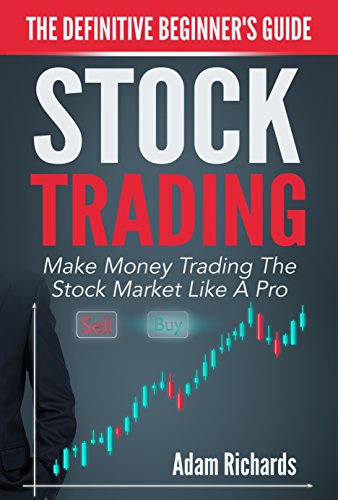Top 10 Best Index Funds In 2023
Content

While most of the other index funds on this list are ETFs, this bond mutual fund from Vanguard is cheap, diversified, and just as effective as its exchange-traded competitors. While this might sound simplistic, the lower the expense ratio the better. There are some index funds with expense ratios of 0.05% or even lower.
An indicator of good fund performance is low tracking error, which highlights a minimal gap between the fund’s and the index’s performance. The disadvantages of investing in index funds are lack of flexibility, inability to beat the market (in theory), tracking errors, lack of downside protection, and concentration risk. The advantages of investing in index funds are low cost, broad diversification, transparency, ease of accessibility, and convenience. For added diversification while staying within developed economies, this Europe-focused index fund fits the bill. It can help reduce your overall portfolio volatility if you are currently heavily weighted towards US and UK stocks. If you do not want to pick individual, sector-specific funds, this “catch-all” fund invests across the entire world.
Moreover, professional investors with better information are often on the other side of stock transactions, putting individual investors at a disadvantage. No wonder it garners five stars from Morningstar and a silver analyst rating, as well as plaudits for its stewards that hold an average of 13 years of portfolio management experience. By consistently applying environmental, social and governance principles to generate market-beating returns, Nuveen Large-Cap Growth demonstrates that you can have your ESG cake and eat it, too. Although past performance doesn’t guarantee a fund’s future returns, it’s always handy to check a fund’s performance at least over the last 5 years to gauge the fund’s potential.
But if you need greater diversification, a total stock market index fund might be a better choice for you. Total stock market index funds aim to duplicate the returns of the entire U.S. stock market. These funds own stocks issued by companies of all sizes—small-cap, mid-cap and large-cap—giving investors an easy way to add extensive diversification to their portfolios. Vanguard FTSE Social Index Fund is a reasonable substitute for anyone seeking a socially responsible alternative to total stock market index funds.
best index funds to invest in 2023 Index One
It has an expense ratio of 0.09% and is a popular choice for investors looking for exposure to large-cap U.S. stocks. Because actively managed funds often underperform the market, and index funds match it, passively managed index funds typically bring their investors better financial returns over the long term. Plus, they cost less, as management fees for actively managed investments tend to be higher. Instead of choosing individual stocks or even a particular benchmark index, one way to reduce your risk is to simply invest in the entire stock market. You can do this by investing in an index fund that tracks a “total market” index, such as the iShares Core S&P Total U.S. Stock Market ETF.
Unlike market cap-weighted and equal-weighted indexes, the WisdomTree U.S. MidCap Dividend Index is fundamentally weighted, comprising the WisdomTree U.S. Dividend Index, excluding the 300 largest companies. The Vanguard High Dividend Yield ETF has earned four stars from Morningstar for the three-year, five-year, and 10-year periods. It is available as a mutual fund (VHYAX) with a $3,000 minimum and a slightly more expensive expense ratio of 0.08%.
If that sounds good to you, the Legal & General Global Real Estate Dividend Index Fund is one of the best index funds and is well worth a look. Here are 9 of the best index funds to buy for various financial goals. This is a wide selection https://g-markets.net/helpful-articles/7-best-forex-trading-books-for-beginners-2/ of the best ETFs and mutual funds that investors can choose from, including those with exposure to large-cap stocks, technology and international firms. Diversification reduces the overall risk of your investment portfolio.
How much do index funds cost?
The S&P 500 Index is one of the most widely tracked indexes, and FXAIX is one of the biggest mutual funds based on that index. The fund was launched in February 1988, making it one of the better-established index funds as well. By contrast, mutual funds are often sold at specific dollar minimums. You may be required to invest a minimum of, say, $1,000, $3,000, or $5,000, depending on the fund. Mutual fund trades are settled once per day, at the end of the trading day, making them slightly less liquid than ETFs.

One of the issues with small indexes is that they can frequently suffer from economic downturns more significantly than larger funds because there are fewer companies to help protect the fund. The Vanguard Total World Stock cannot meet Fidelity’s ZERO expense ratio but considering more index funds have at least a modest expense ratio. Vanguard’s TWS is a bit more expensive than other alternatives, at .07%, but that is still a reasonable expense ratio for most purposes. The Fidelity ZERO Large Cap Index fund is one of the best and most affordable funds to invest anywhere. The ZERO in the name comes from the fact that it’s a zero-expense fund. Jeff began his career in print, working at local newspapers in Virginia, Ohio, Arizona and North Carolina.
Concentrated in US tech stocks
As Ben Felix explained in his interview with us, bonds are designed not to seek return, but to decrease volatility and stabilise a portfolio. Portfolios with more bonds relative to stocks will be better suited for investors with a lower appetite for risk. This means that going for a 100% stocks strategy or not should come in line with how smooth you wish your returns to be, to offset the potential impact of a downturn over your investment journey.
If you want to invest in the UK and particularly want exposure to the whole UK market, including small, mid-sized and large companies, this low-cost index fund might be a great choice. It will provide more growth opportunities than a FTSE 100 tracker but will likely come with greater volatility. The Vanguard FTSE 100 Index Unit Trust is a passive fund that tracks the performance of the FTSE 100 index, an index of the 100 largest companies listed on the London Stock Exchange.
Expense Ratio
The fund, launched by Vanguard in 2019 to track the performance of the FTSE All-World Index, currently holds more than €11 billion under management. Data such as fund returns, yields, expense ratios and assets under management are as of April 11. Beyond that, we looked for funds that had broad-based portfolios that produced for investors over time. We also consulted with fund experts at Morningstar, Refinitiv Lipper and VettaFi to come up with highly-ranked options offered by stable, trustworthy providers.
That said, an index fund could underperform and lose money for years, depending on what it’s invested in. It’s surprisingly easy to invest in an index fund, but you’ll want to know what you’re investing in, not simply buy random funds that you know little about. Schwab is especially noted for its focus on making investor-friendly products, as evidenced by this fund’s razor-thin expense ratio. This mutual fund has a strong record dating back to 1997, and it’s sponsored by Charles Schwab, one of the most respected names in the industry. With hundreds of billions in the fund, it’s among the most popular ETFs. The fund is sponsored by State Street Global Advisors — another heavyweight in the industry — and it tracks the S&P 500.
What Are the Best Index Funds To Invest In?
It holds over 5,000 individual stocks and has a low expense ratio of just 0.10%. It provides investors with exposure to the fast-growing economies of these countries. The Vanguard High Dividend Yield ETF tracks an index of stocks that have above-average dividend yields.
- Many funds use different indexes and sampling strategies to construct their portfolios and to measure performance.
- Launched in May 2001, the VTI is an index ETF that tracks virtually the entire U.S. stock market, which currently includes 3,945 companies.
- Through a broker, you gain access to the financial markets where you can buy stocks, ETFs, bonds and even some more complex products like derivatives.
- Like other international stock funds, this fund exposes investors to foreign currency fluctuations.
The average earnings growth rate for stocks in the Vanguard Dividend Appreciation ETF is 17.9%, with price-to-earnings (P/E) and price-to-book (P/B) ratios of 21.0 and 4.5 times, respectively. When it comes to the best index funds, the Vanguard Dividend Appreciation ETF (VIG, $153.25) is an excellent choice if you value safety and income growth. The fund tracks the performance of the S&P U.S. Dividend Growers Index, a group of the best dividend stocks that have increased their annual dividend payments for 10 consecutive years. One reason, writes Kiplinger contributor Coryanne Hicks, is for their low cost.
Want to put your savings into action and kick-start your investment journey
Start Slide Show with PicLens Lite